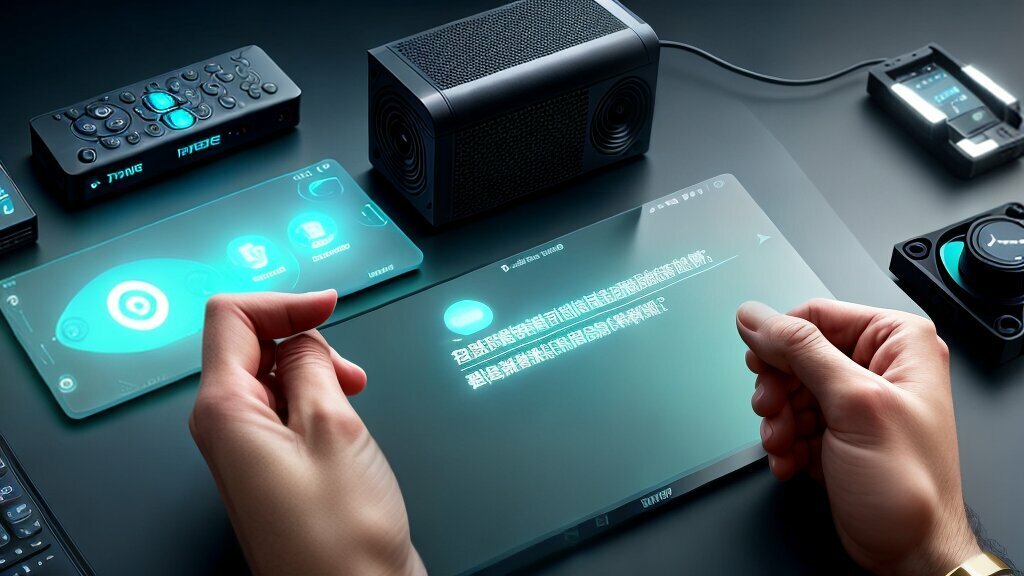If you or a loved one is experiencing hearing loss, it can be challenging to communicate effectively. Fortunately, there are various communication strategies that can enhance daily interactions and foster better understanding and support. In this article, we will explore practical techniques that can improve communication skills for individuals with hearing loss.
Key Takeaways:
- Communication strategies can significantly improve daily interactions for individuals with hearing loss
- Effective communication requires patience, empathy, and understanding
- Visual cues, active listening, and assistive communication devices can aid in effective communication
Understanding Hearing Loss Communication Challenges
Individuals with hearing loss face unique communication challenges that can impact their daily interactions with others. One of the main challenges is the inability to hear certain sounds or conversations, leading to misunderstandings and frustration. Additionally, individuals with hearing loss may struggle with following group conversations, especially in noisy environments.
It’s important to understand that communication is a two-way process, and both parties must work together to ensure effective communication. Individuals with hearing loss may feel embarrassed or self-conscious about their hearing difficulties, which can lead to social isolation and feelings of loneliness. Therefore, it’s crucial to create an inclusive and supportive environment to help individuals with hearing loss feel comfortable expressing their needs.
Importance of Empathy and Patience
When communicating with someone with hearing loss, it’s essential to approach them with empathy and patience. This means being aware of their communication difficulties and taking the time to understand their perspective. It’s important to speak clearly and slowly, enunciating words and avoiding shouting or speaking too loudly. Avoiding interrupting the person and speaking one at a time can also help to improve communication.
“The most important thing is to listen to the person with hearing loss and show that you value their input and opinions.”
Visual Cues and Assistive Devices
Visual cues such as facial expressions, gestures, and body language can be helpful in aiding communication. Maintaining eye contact and using appropriate facial expressions and gestures can help to convey important information and emotions. Additionally, assistive devices such as hearing aids and cochlear implants can significantly improve communication for individuals with hearing loss. These devices amplify sounds, making it easier for the individual to hear and participate in conversations.

Effective Communication Techniques
Effective communication techniques can make a significant difference in improving communication for individuals with hearing loss. Speaking clearly and facing the person directly can help to ensure that they can see your lips and facial expressions. Additionally, using closed captioning or providing written information can aid in understanding. Lastly, creating a conducive environment, such as a quiet room with good acoustics, can improve communication by reducing background noise and distractions.
Enhancing Communication Skills for Individuals with Hearing Loss
Effective communication is a vital aspect of building relationships and fostering understanding. However, for individuals experiencing hearing loss, communication can be challenging, often leading to frustration and misinterpretations. Fortunately, there are various communication tools and techniques that can aid in enhancing communication abilities and creating inclusive environments.
Active Listening
Active listening is a fundamental aspect of effective communication, particularly for individuals with hearing loss. It involves giving undivided attention to the speaker and providing feedback to ensure that the message is understood correctly. Active listening techniques include maintaining eye contact, facing the individual when speaking, and avoiding distractions such as background noise or visual distractions. Additionally, individuals with hearing loss can benefit from asking questions and paraphrasing to clarify the message and ensure that they have understood it correctly.
Visual Cues
Visual cues can be an effective tool for individuals with hearing loss, as they can provide additional context and support understanding. Visual cues include gestures, facial expressions, and body language, which can aid in conveying the message’s tone and intent. Additionally, individuals with hearing loss can benefit from watching the speaker’s lips and mouth movements, which can provide additional information that may not be heard.
Assistive Communication Devices
Assistive communication devices are technological tools that can aid in communication for individuals with hearing loss. These devices include hearing aids, cochlear implants, and personal amplifiers that can improve sound quality and volume. Additionally, assistive communication devices such as speech-to-text technology can aid in converting spoken language into text, providing a visual representation of the message and supporting understanding.
Employing these communication tools and techniques can aid in enhancing communication abilities for individuals with hearing loss. By creating inclusive environments that support effective communication, we can foster better relationships and understanding.

Effective Communication Techniques for Hearing Loss
Speaking clearly and using appropriate gestures are critical components of effective communication with individuals experiencing hearing loss. However, there are other techniques that can be employed to enhance communication further.
Visual Cues
Visual cues are an essential tool for individuals experiencing hearing loss. These cues help to convey meaning by providing context and supplementing spoken words. For instance, using facial expressions, body language, and hand gestures can aid in conveying important information.
“Visual cues are an essential tool for individuals experiencing hearing loss. These cues help to convey meaning by providing context and supplementing spoken words.”
It is also crucial to maintain eye contact when speaking with someone with hearing loss. This gesture shows that you are paying attention and are committed to communication. It also helps to build trust and rapport.
Assistive Communication Devices
There are many technological devices that can assist individuals with hearing loss in communicating effectively. For example, hearing aids, cochlear implants, and speech-to-text software can all aid in understanding and processing spoken language. Using these devices can also alleviate the frustration and anxiety associated with communication breakdowns.

Creating a Conducive Environment
The environment in which communication takes place can significantly impact the effectiveness of the interaction. It is essential to minimize background noise and distractions as much as possible. The room should be well-lit, with enough light on the speaker’s face to aid in reading facial expressions and body language.
It is also beneficial to use a quiet, calm tone of voice when speaking, as this can help individuals with hearing loss to follow conversations more effectively. Additionally, it is best to avoid speaking too quickly or too loudly, as this can distort speech and make it harder to understand.
- Speak clearly and use appropriate gestures
- Employ visual cues
- Utilize assistive communication devices
- Create a conducive environment
By employing these techniques, individuals with hearing loss can communicate effectively and enjoy a fuller life.
Fostering Supportive Environments for Communication
Effective communication with individuals experiencing hearing loss requires patience, empathy, and awareness. Creating a supportive environment that fosters communication can go a long way in strengthening relationships and promoting inclusivity.
One way to create a supportive environment is to ensure that the communication setting is free from distractions. Background noise, visual obstructions, and other distractions can make it difficult for individuals with hearing loss to accurately follow a conversation. To create a conducive environment, it is important to choose an appropriate location that is quiet and well lit.
Another way to foster supportive environments is by practicing active listening. Active listening means giving undivided attention to the speaker and not interrupting or finishing their sentences. It involves being present and focused during a conversation, and responding in a way that demonstrates an understanding of the speaker’s message.
Visual cues can also be helpful in facilitating effective communication. For example, using facial expressions, gestures, and body language can help convey emotions and meaning. Additionally, assistive communication devices such as hearing aids, FM systems, and closed captioning can provide further support for individuals with hearing loss.
It is important to recognize that individuals with hearing loss may need extra time to process information, and may require repetition or clarification. It is essential to be patient and understanding, and to acknowledge the unique needs of each individual.
“Effective communication is not just about understanding words, it’s about understanding the person behind them.”
By fostering supportive environments and practicing effective communication techniques, we can enhance our ability to interact with individuals experiencing hearing loss. By doing so, we can promote inclusivity and strengthen our relationships, making the world a more accessible and connected place.

Conclusion
In conclusion, effective communication strategies are crucial for individuals experiencing hearing loss. By understanding the unique challenges faced by those with hearing impairment and employing appropriate techniques and tools, we can foster better communication and support.
Active listening, visual cues, and assistive communication devices can all be valuable tools for enhancing communication abilities. Additionally, creating a conducive environment for communication, such as minimizing background noise and speaking clearly, can further improve understanding.
It is also important to remember the significance of empathy, patience, and awareness in fostering supportive environments that facilitate effective communication. By utilizing these strategies, we can strengthen relationships and promote inclusivity for individuals with hearing loss.
FAQ
Q: What are some communication strategies for hearing loss?
A: Some effective communication strategies for individuals experiencing hearing loss include speaking clearly, using visual cues, and utilizing assistive communication devices.
Q: What are the communication challenges faced by individuals with hearing loss?
A: Individuals with hearing loss may face challenges in understanding conversations, following rapid speech, and hearing in noisy environments.
Q: How can communication skills be enhanced for individuals with hearing loss?
A: Communication skills can be enhanced for individuals with hearing loss through techniques such as active listening, utilizing visual cues, and incorporating assistive communication devices.
Q: What are some effective communication techniques for hearing loss?
A: Some effective communication techniques for individuals experiencing hearing loss include speaking clearly, using appropriate gestures, and creating a conducive environment for communication.
Q: How can supportive environments be fostered for effective communication with individuals with hearing loss?
A: Supportive environments for individuals with hearing loss can be fostered by practicing patience, empathy, and creating an inclusive atmosphere that prioritizes understanding.